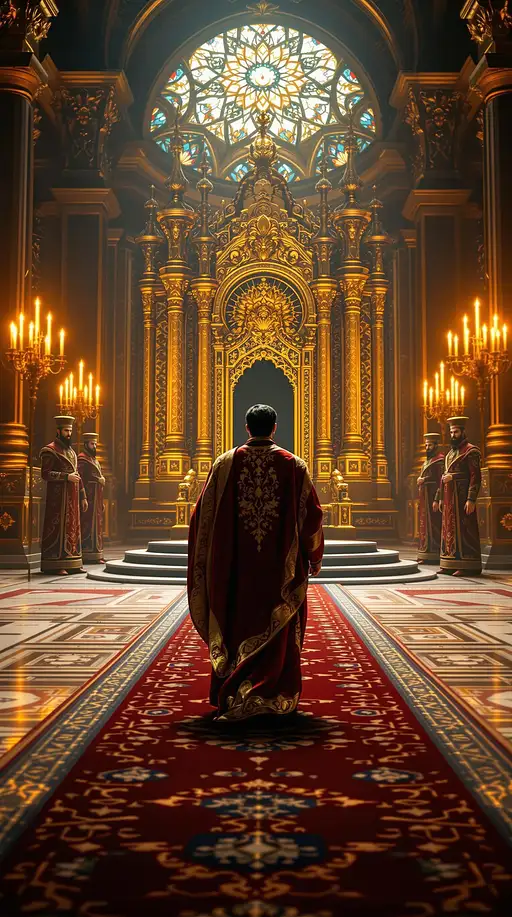
9 months ago
an Ottoman Sultan walking towards his grand, jewel-encrusted throne. The opulent chamber is bathed in the golden glow of towering candelabras and intricate stained-glass windows, casting a mesmerizing play of light and shadow across the vast marble floor. As the Sultan moves forward, the weight of his richly embroidered kaftan sways with each step, the fine silk and gold threads catching the flickering light. His heavy rings glint under the illumination, a testament to his imperial power. The deep red and navy-blue carpets beneath his feet are adorned with intricate Ottoman motifs, leading like a royal path to the majestic throne ahead. Two towering Janissary guards stand on either side of the throne, their hands resting firmly on the hilts of their ornate scimitars. Their piercing gazes remain unwavering, their presence a symbol of absolute loyalty and strength. The throne itself is an artwork of imperial splendor—golden, high-backed, and adorned with detailed carvings of tulips and calligraphic inscriptions, representing the vast reach of the empire. The air is thick with the scent of burning oud and rose water, filling the hall with a regal fragrance. Soft echoes of distant ney music float through the room, blending with the quiet shuffle of the Sultan’s footsteps. The grandeur of the chamber, with its towering domes and endless arabesque patterns, serves as a reminder of his absolute authority. As he approaches his throne, the camera focuses on his outstretched hand, ready to grasp the armrest, a moment frozen between movement and command—a symbol of his dominion over an empire that stretches across continents.



